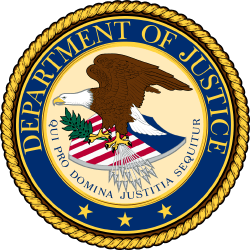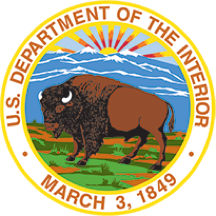News and Updates
Innovative work, news, and ideas from people and teams in government
Now available: Trusted Tester for Web Certification courses, version 5.1.3
The Department of Homeland Security (DHS) has updated its Trusted Tester program courses. It features six improvements, including accessible plain language, adjusted exam requirements, and enhanced course design. The updated curriculum aligns with the latest Trusted Tester Conformance Test Process for Web, offering a more efficient learning experience. Enrollment is open via the Training Portal, and inquires can be directed to the DHS Accessibility Helpdesk for assistance. — via Section508.gov

Meet your Digital Experience Council
Celebrating the work of public servants
Performance.gov invites you to participate in their #GovPossible campaign to celebrate Public Service Recognition Week (PSRW)! Recognize the invaluable efforts of government employees who ensure that the everyday needs of Americans are met. Access a range of tools and resources to help you join the #GovPossible campaign and show your support. The #GovPossible toolkit makes it easy for you to participate in this important (and fun!) campaign. — via Performance.gov

Justice department to publish final rule to strengthen web and mobile app access for people with disabilities
On April 8, Attorney General Merrick B. Garland signed a final rule under Title II of the Americans with Disabilities Act (ADA) to ensure the accessibility of web content and mobile applications for people with disabilities. This final rule clarifies the obligations of state and local governments to make their websites and mobile applications accessible. Learn more about this rule and why the Attorney General believes it will “break down barriers that have kept people with disabilities from fully participating in American Life.” — via Department of Justice

Calling All Americans! The federal government is seeking your input
The White House Office of Management and Budget (OMB) wants your thoughts on how federal agencies can more broadly and meaningfully engage with you and your communities. Share your ideas by May 17, 2024 to help build a more inclusive, responsive, transparent, and accountable government. — via Performance.gov

Reconsidering the consent form: the least user-friendly aspect of UX research
The Open Data, Design, and Development (ODDD) team has replaced signed consent forms with a more accessible user research agreement process, offering multiple opt-in points. This ensures informed consent and participant autonomy. Explore why and how the ODDD team implemented this comprehensive participant consent process in their user research. — via Office of Natural Resources Revenue

18F practices in action (spoiler: this stuff works)
How well do 18F software development practices work? The 18F team reflected on a recent project for the Cybersecurity and Infrastructure Security Agency (CISA) .gov registry to gauge the effectiveness of six recommendations aligned with what they actually did. — via 18F

How USAGov uses data to improve content
Each month, USAGov’s content designers spend many hours ensuring that the content on USA.gov and USAGov en Español is up-to-date, accurate, and meets user needs. Learn how their team does holistic reviews of each topic section based on a rolling calendar with the goal of updating all content at least every 6 months. — via USA.gov

18F at ten
We’re celebrating all the ways we continue to realize our founding vision: bringing technologists into government, launching shared digital services, and helping partner agencies build user-centered technology. — via 18F

Search.gov year in review: 2023 report
Learn what types of information people searched for on federal websites in 2023, see emerging trends the team is exploring to improve customers’ search experience in 2024, and check out three new updates. The data tab provides insightful summaries for 13 popular topic areas—and lists the public’s top 25 search terms, in their own words, for each. — via Search.gov

Spring 2024 Community Summit
Equity in action: GSA’s study on remote identity-proofing technologies
The Biden-Harris President’s Management Agenda (PMA) emphasizes an effective, equitable and accountable government. As part of this effort, the General Services Administration (GSA) is conducting a study on the equity of remote identity proofing. The study aims to assess and improve the accessibility and equity of remote identity verification technologies such as facial matching systems. Learn more about the context, purpose, and progress of the study, and how it supports GSA’s goal of enhancing digital government services and prioritizing equitable design practices. — via Performance.gov

Customer experience: beyond surveys
Want to measure customer experience? Surveys aren’t the only way! Consider these guiding questions to help your team select an approach based on what you want to learn. — via 18F

Optimizing the federal digital experience: aligning content governance, coordination, and database development
This blog post dives into the details of building a dynamic content database and audit for onrr.gov. Learn how effective subject matter expert (SME) coordination, strategic content planning, and application of visualization tools contribute to enhancing content governance and user experience on a federal website. — via Office of Natural Resources Revenue

Timeless top 10 best practices for great government websites
Balancing priorities and values
Getting the word out about voter registration: Vote.gov’s first social media takeover with USAGov
Last fall, vote.gov and the USAGov program partnered for their first-ever social media takeover on National Voter Registration Day. The campaign, which encouraged the public to register to vote, reached 36,000 people across USAGov’s platforms and generated over 2,000 engagements. The partnership raised awareness for vote.gov, boosted vote.gov’s website traffic, and laid the groundwork for the future collaborations and resource-sharing between the two entities. This collaboration between vote.gov and USAGov offers a model for social media takeovers and partnerships between federal agencies and teams. — via USA.gov







